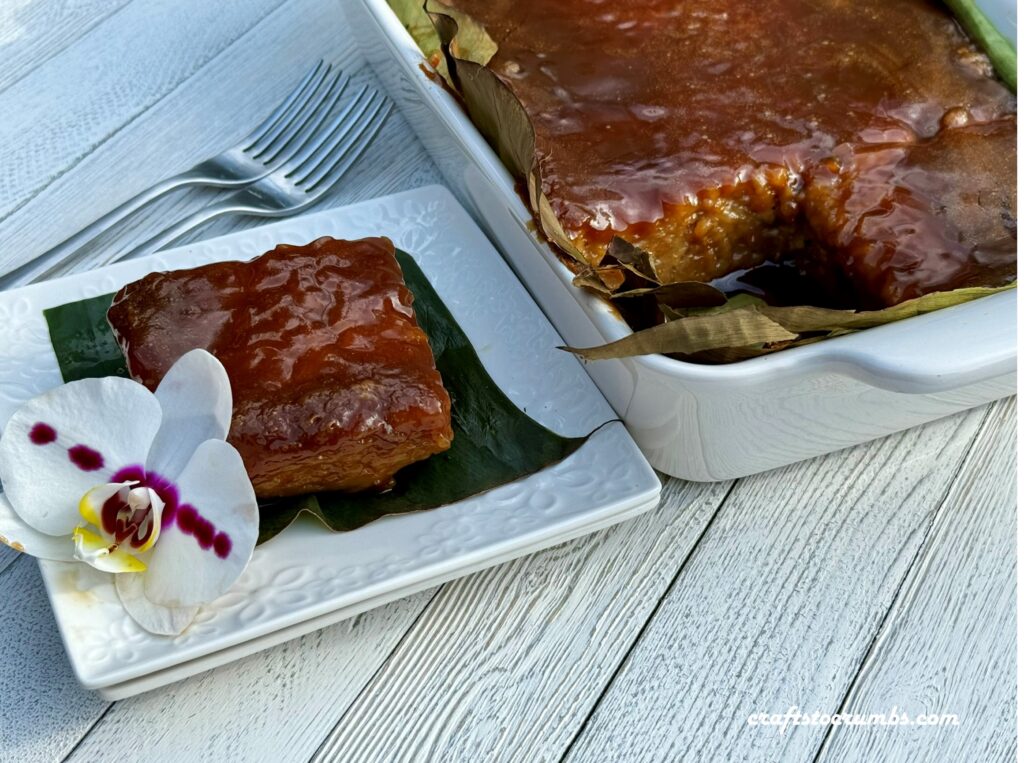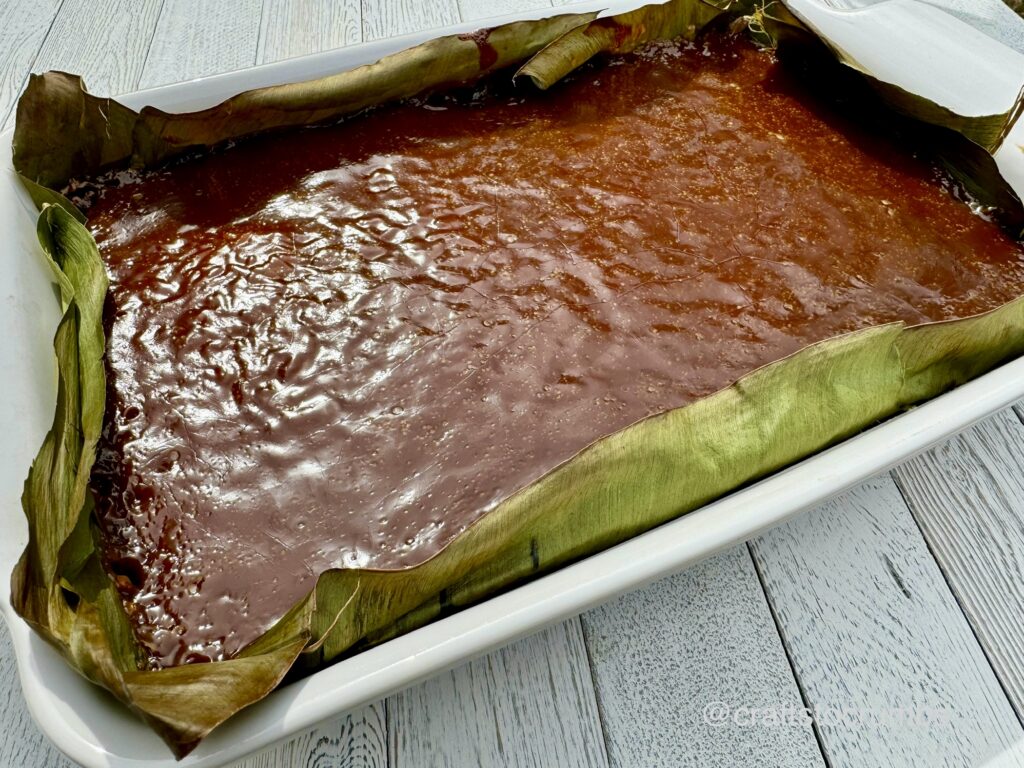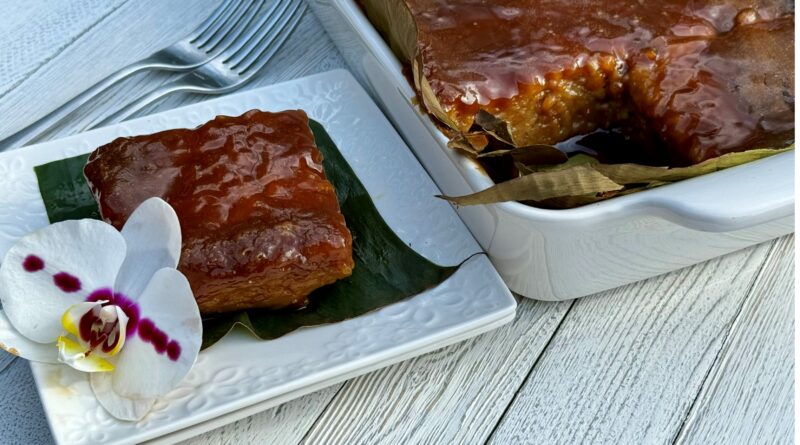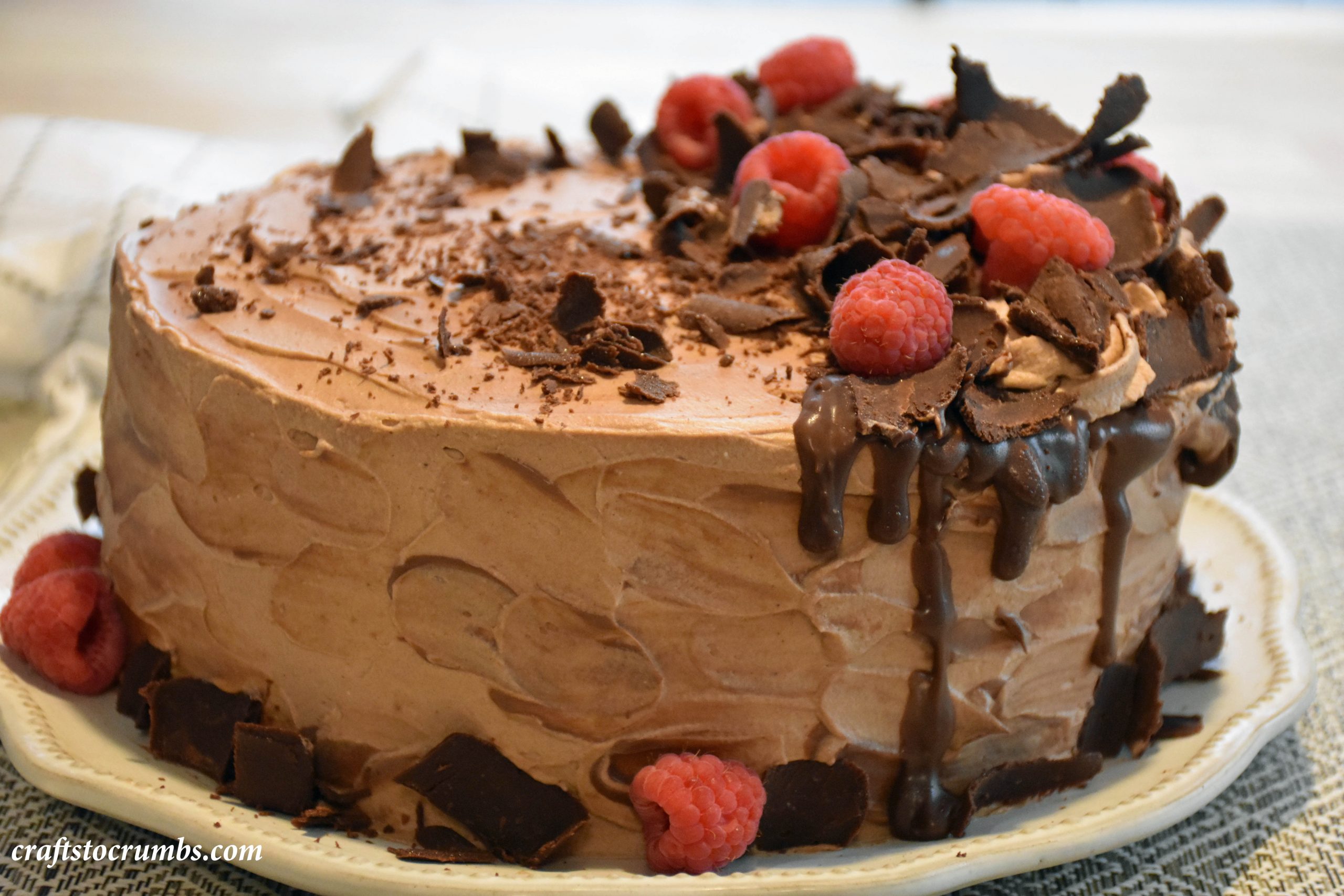Biko
Biko, is a Filipino sticky rice cake. There are many different variations, and they are known by different names. However, biko typically consists of sticky rice cooked in sweetened coconut and topped with latik, which can be either coconut curd, custard, or caramel.
Recently, I had the pleasure of eating biko vicariously through my sister, who spent some time in the Philippines for work. She tried three different versions of the biko within the first two weeks of her stay. Lucky for me, the Southeast Asia flavors are very similar. She told me it tasted like khao tom, which makes sense seeing that some of the methods like cooking the rice in sweetened coconut milk and then again in banana leaves are the same as making khao tom. Notable difference is that khao tom are packaged into parcels and steamed, not baked, but the flavors imparted by the bananas are present in both.
I tested this with different sugars and rice cooking methods. See my notes below on making biko. As someone who grew up eating sticky rice as a staple, I think it’s a great sticky rice dessert to add to the repertoire of dessert.

• Sweet Rice – use uncooked sticky rice, also known as sweet rice. I used the Southeast Asian variety, which is thinner and longer grain than the short grained Japanese sweet rice. You can use either variety. If you use the Japanese variety, cooking time may vary.
• Sugars – you can use white sugar or any brown sugar the coconut rice. Unrefined brown sugar or jaggery is preferred. I like the unrefined coconut sugar for this recipe. I tested with panela as well, but that was too unrefined/unfiltered and had a metallic taste to it. That’s probably the only sugar that I don’t recommend for this recipe. Note that you will have to adjust the amount of sugar and salt depending on which sugars you use. In my opinion, ¾ cup of regular brown sugar was too sweet compared to the coconut sugar, which is already has lower glycemic index.
• Soaking the rice – you can soak the rice in cold water for at least 4 hours or overnight. Or use the hot water soak method, which I used in this recipe. While I tested this recipe, it dawned on me, we never have to think about soaking sticky rice because we eat it everyday and usually have rice soaking for our next meal. Whereas, for others, this is atypical. So using the hot water method is best of both worlds to have soaked rice and you don’t have to plan it hours or even a day ahead.
• Cooking method – after soaking the rice, you can steam the sticky rice. It also takes about 15 minutes. Then fold it into the sweetened coconut milk mixture. The cooked rice will soak up the sweetened coconut milk like in sunkaya. Then proceed to top with caramel. This method is commonly used in wajit, which is the Indonesian version of this dessert. If you don’t have a bamboo sticky rice steamer, you can use a vegetable steamer with small holes, or steam in a wet muslin cloth.

Biko
Time: 1hr and 15 minutes
Serves: 12
Rice cake
2 cups (420g) uncooked sticky rice or sweet rice
¾ cup (105g) unrefined coconut sugar (or brown sugar – may need to adjust if using brown sugar)
½ teaspoon salt
1 1/2 cans (600ml) coconut milk
1 cup (237ml) (plus additional for soaking rice)
1 pandan leaf, twisted (optional)
Banana leaves (optional)
Coconut caramel
1/2 can (200 ml) coconut milk
½ cup (70g) unrefined coconut sugar (or brown sugar)
¼ teaspoon salt
• Line an 11×7 or a 9×9 baking dish with banana leaves (preferred) or parchment paper. Set aside.
• Bring a small pot of water to a boil. The amount is not precise. You need enough to cover the rice by at least an inch.
• Add the sticky rice to a large bowl and rinse in cold water until the water runs clear. Drain. Cover the rice in boiling water. Let it soak for 20 minutes. Then strain and set the rice aside.
• Preheat the oven to 375°F.
• In a large heavy bottom pot, add 1 ½ cans (600ml) coconut milk, ¾ cup coconut sugar, ½ teaspoon salt, 1 cup water, and the pandan leaf if using. Cook over medium heat until the sugar dissolves.
• Add strained rice and cook for 15-20 minutes until the rice is cooked. It should be soft and the mixture pulls from the sides of the pot.
• Remove the pandan leaf. Transfer the rice mixture into the baking dish.
• Make the coconut caramel, by adding the other ½ can of coconut milk, ½ cup coconut sugar, and salt to a saucepan. Cook over medium heat. Stir only a few times to combine the ingredients. Once the caramel starts to boil, do not stir. Let it boil/bubble for about 5 minutes.
• Pour the caramel over the rice mixture in the baking dish.
• Bake for 20-25 minutes.
• For a brulee top version, turn on the broiler for the last 5 minutes of baking.
• Serve warm or at room temperature. Let it cool slightly to easily cut into squares.
Discover more from Crafts to Crumbs
Subscribe to get the latest posts sent to your email.



